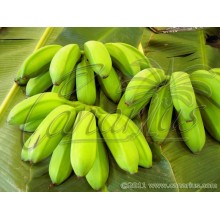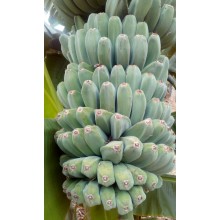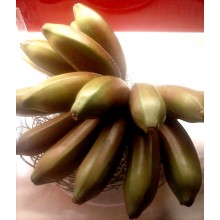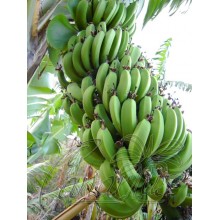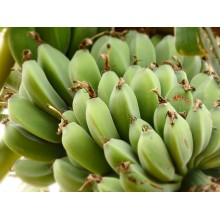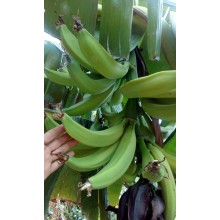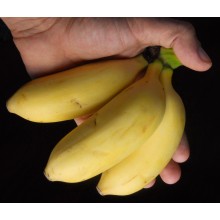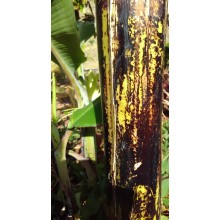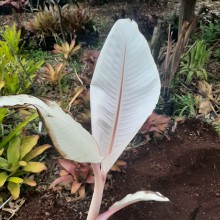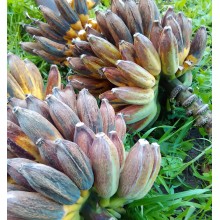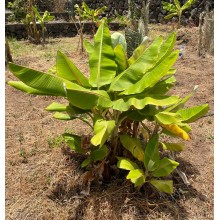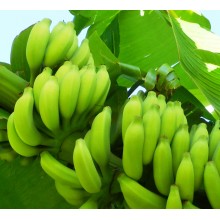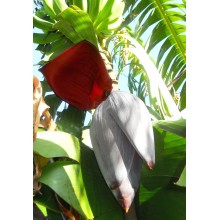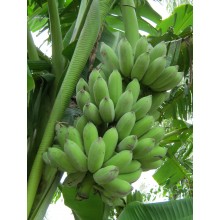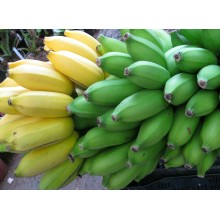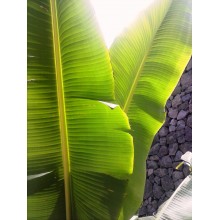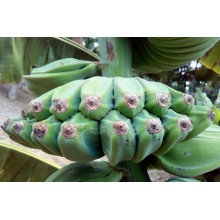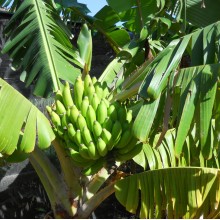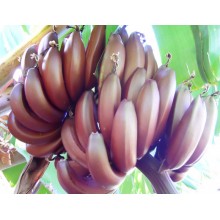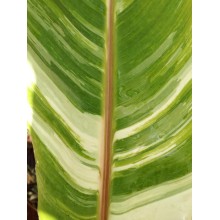Tutte le piante Ci sono 1885 prodotti.

Se vi piacciono le piante esotiche, allora sei nel posto giusto. Canarius offre le piante esotiche difficile da trovare che sono raramente disponibili in centri di giardinaggio. Il nostro negozio ha specie naturali e rari ibridi. Offriamo piante esotiche provenienti dalle Isole Canarie.
Gli ordini sono inviati a ovunque in Europa e anche in tutto il mondo. I pacchi raggiungeranno la vostra casa in pochi giorni dopo la spedizione (ma abbiamo bisogno anche alcuni giorni per l'elaborazione). Non esitate a contattarci se avete domande.
Sotto-categorie
-
Succulente
I deserti del mondo e le zone secche ospitano le piante più interessanti. Canarius offre una selezione crescente di piante succulente di massima qualità, perché sono coltivate all'aperto, in pieno sole delle Isole Canarie.
I succulente o "piante grasse" sono specie di ritenzione di acqua, adattate alle condizioni di asciutto. Loro accumulano succum (succo, acqua) nelle loro foglie, steli o radici, e spesso mostrano un aspetto robusto e carnoso.
-
Esotiche
Le piante esotiche sono specie provenienti da altre parti del mondo, e di solito hanno le qualità ornamentali: una vegetazione lussureggiante, fiori colorati, forme insolite... Qui è possibile trovare una grande varietà di piante esotiche: da bromeliacee e Heliconias, fino a palme e piante d'appartamento.
Le piante esotiche non hanno un uso particolare. I collettori acquistano questo tipo di piante per la loro rarità, per la decorazione interna o esterna, a seconda delle loro caratteristiche.
-
Da frutto & Per la salute
Le piante da frutto, erbe e piante medicinale sono concentrati su come ottenere una salute migliore. In questo contenuto della sezione, ogni tipo di pianta produce effetti salutari, entrambi alberi da frutto (Feijoa, Ananas, Fina Jete...) e piante per la salute, come Graviola, Aloe vera, Callisia fragrans... Nel normale metabolismo di tutti gli esseri viventi, l'organismo produce delle sostanze nutritive da latenti per l'ambiente; alcune di queste sostanze chimiche sono parte del processo in tutte le specie. Normalmente, i composti utili sono concentrati in alcune dei sue parti: foglie, semi, fiori...
-
Speciale
Su canarius.com cerchiamo di rimuovere i limiti nel campo della botanica. Sul nostro negozio online cerchiamo di facilitare l'acquisto / vendita di piante di tutto il mondo. Per questo motivo, coltiviamo piante di tutto il mondo, specie più comuni ed anche piante più particolari, come si può vedere in questa sezione.
-
Musa 'Dwarf Orinoco', 'Dwarf Topocho'
Musa 'Dwarf Orinoco', 'Dwarf Topocho'
This is a much shorter clone of the famous banana named Orinoco, Topocho or Bluggoe. Tolerant of wind, drought and cold. Fruits are very different from the common bananas from the supermarket, triangular or square in section - they can be eaten cooked or raw!
41,50 € -
Musa 'Dwarf Saba'
Musa 'Dwarf Saba'
Saba is a hardy edible banana with tasty, thick and squared fruits, eaten raw or cooked, widespread in tropical Asia. Also flowers are regularly eaten as a delicacy. It possibly originated in mountain regions of NE India and trees are rather hardy to drought and cold. This dwarf or semi-dwarf type helds bunches at 1,7-2,5 m from the ground.
78,20 € -
Musa 'Figue Rose Naine' - Dwarf Red Banana
Musa 'Figue Rose Naine' - Dwarf Red Banana
Spectacular, red-skinned banana. Plants are stout and leaves have purple leafstalks. Fruits are dark purple during ripening and then turn red with some yellow as they ripen. The flesh is pinkish and MUCH richer in vitamin
40,90 € -
Musa 'Gros Michel' - Banana
Musa 'Gros Michel' - Banana
Gros Michel is the lost commercial banana of the past. It was the leading banana in the world but in the early XX century, diseases destroyed most plantations. These great "standard" bananas taste better than modern Cavendish types.
52,00 € -
Musa 'Lep Chang Kut' - Elephant's toe Banana
Musa 'Lep Chang Kut' - Elephant's toe Banana
Distinct hardy edible banana from mountain regions of NE India, known from at least Thailand, Vietnam and the Philippines. Its Thai name means Elephant's toe Banana. It is very uncommon in cultivation and possibly one of the hardiest to drought and cold. White wax coats much of the pseudo-stem.
59,70 € -
Musa 'Macho' - Cuban Horn Plantain
Musa 'Macho' - Cuban Horn Plantain
The ever-popular Caribbean plantain is widespread in the exotic cuisine of the West Indies. This banana is better picked when green and cooked to show all the flavours.
55,00 € -
Musa 'Manzano' - Apple Banana
Musa 'Manzano' - Apple Banana
Apple bananas are among the best of all bananas. Small fruits of excellent quality, very sweet and truly reminiscent of an apple. It is called Manzano in Cuba and Latundan in the Philippines. It achieves a variable size of 3,5-6 m (10-18 ft) according to local conditions.
43,50 € -
Musa 'Nakitengwa' - Highland Beer Banana
Musa 'Nakitengwa' - Highland Beer Banana
Nakitengwa is one of the " East African Highland Bananas ", distinguishable by the numerous glossy black blotches on the pseudostem. Within this grouop, it is a "Beer Banana", and its fruits are traditionally (and now industrially) used for making banana beer.
60,00 € -
Musa 'Nam Wah Albino'
Musa 'Nam Wah Albino'
This Albino clone of Musa Nam Wah is obtained once in a long while when a plant of variegated Nam Wah gives a pup lacking clorophyll. This shoot will grow new leaves of an incredibly white colour, sometimes with a soft pink hue.
165,00 € -
Musa 'Nam Wah Khom'
Musa 'Nam Wah Khom'
The quality of the fruit of 'Nam Wa Khom' is equivalent to others "Nam Wa" bananas, but the height of mature plants is only 1.5 m.
62,50 € -
Musa 'Ney Poovan'
Musa 'Ney Poovan'
NEW. Small sweet fruited cultivar which is very popular in India.
52,50 € -
Musa 'Orinoco', 'Topocho' - Banana Tree
Musa 'Orinoco', 'Topocho' - Banana Tree
This is the famous banana named Orinoco, Topocho or Bluggoe. Tolerant of wind, drought and cold. Fruits are very different from the common bananas from the supermarket.
42,50 € -
Musa 'Pisang Awak' - Dwarf Namwah Banana
Musa 'Pisang Awak' - Dwarf Namwah Banana
Pisang Awak (= Namwah, Ducasse) is a favourite dessert cultivar from SE Asia, now grown worldwide. Its main features are (1) plant hardiness to drought, wind, cold and diseases (2) spectacular flavour with creamy texture. Few drawbacks are known. This is the dwarf clone known as Namwah Kohm.
45,50 € -
Musa 'Pisang Ceylan' Mysore
Musa 'Pisang Ceylan' Mysore
Pisang Famille is a fine virus-free clone of the well-known Mysore Banana. Young leaves typically have a copper-pink colour underneath, they are thick and almost waxy. Bananas are small,thin-skinned, excellent. It is one of the most popular bananas in India and the shelf life is very long.
44,50 € -
Musa 'Pisang Mas' - Lady Finger Banana
Musa 'Pisang Mas' - Lady Finger Banana
Pisang Mas bananas from South East Asia are considered by many the best in the world. They are small and very sweet, and rich yellow inside. It melts in the mouth as you taste it. It is quite different from many bananas since it belongs to the uncommon AA type. Synonyms are: Kluai Khai (Thailand), Bocadillo (Colombia), Lady Finger, Sucrier, etc.
44,50 € -
Musa 'Rajapuri' - Dwarf Banana
Musa 'Rajapuri' - Dwarf Banana
Dwarf banana with small sweet fruits, similar to the "apple banana". It is native to the cool Punjabi Himalayas, and it easier and faster than most other types of bananas. It can grow from pup to fruit in much less than one year, so it does well in non-tropical countries with a short growing season.
59,50 € -
Musa 'Variegated Nam Wah'
Musa 'Variegated Nam Wah'
Quite stable variegated clone of the ever popular 'Dwarf Nam Wah', also known as 'Dwarf Pisang Awak'- Stripes occur in different width and tones. It is not a real dwarf. but a a semi-dwarf banana, with more-than-excellent fruits which are very popular in SE Asia and Australia.
186,00 €
Al momento ci sono pochi prodotti in questa categoria Tutte le piante




















